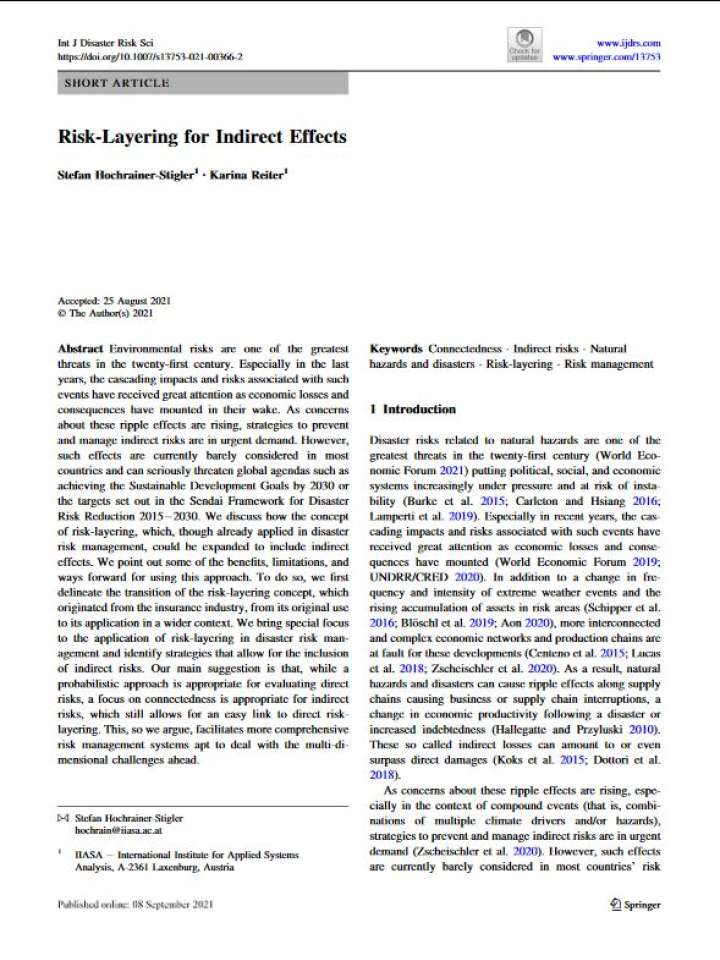Risk-layering for indirect effects
In this paper, the authors discuss how the concept of risk-layering, which, though already applied in disaster risk management, could be expanded to include indirect effects. We point out some of the benefits, limitations, and ways forward for using this approach. To do so, we first delineate the transition of the risk-layering concept, which originated from the insurance industry, from its original use to its application in a wider context. We bring special focus to the application of risk-layering in disaster risk management and identify strategies that allow for the inclusion of indirect risks. Our main suggestion is that, while a probabilistic approach is appropriate for evaluating direct risks, a focus on connectedness is appropriate for indirect risks, which still allows for an easy link to direct risk-layering. This, so we argue, facilitates more comprehensive risk management systems apt to deal with the multi-dimensional challenges ahead.
While a probabilistic approach may be appropriate for direct risk-layering, a focus on connectedness is suggested to be appropriate for indirect risk-layering. Connectedness can be assessed using different measures suggested in the literature, for example focusing on the proportion of elements affected or how many elements are too big to fail, or too interconnected to fail, and so on. The measure used itself ultimately depends on the research question at hand and should be chosen case specific. Furthermore, a system approach is essential for indirect risk management, which requires that the system is appropriately defined—a task that is already quite complex but nevertheless necessary for any kind of such an analysis. To add dimensions and complexity, systems of systems may be constructed, but the basic setup for a risk-layer approach remains, that is, the clear definition of what is inside the system and what is not. As discussed, Agent-Based Modeling (ABM) approaches seem especially well suited to explicitly model the indirect effects both from an individual (for example, elements in the system) as well system level perspective and we suggested ways forward on how ABMs can be integrated within direct risk-layering approaches to be used for indirect risk-layering.
Explore further
